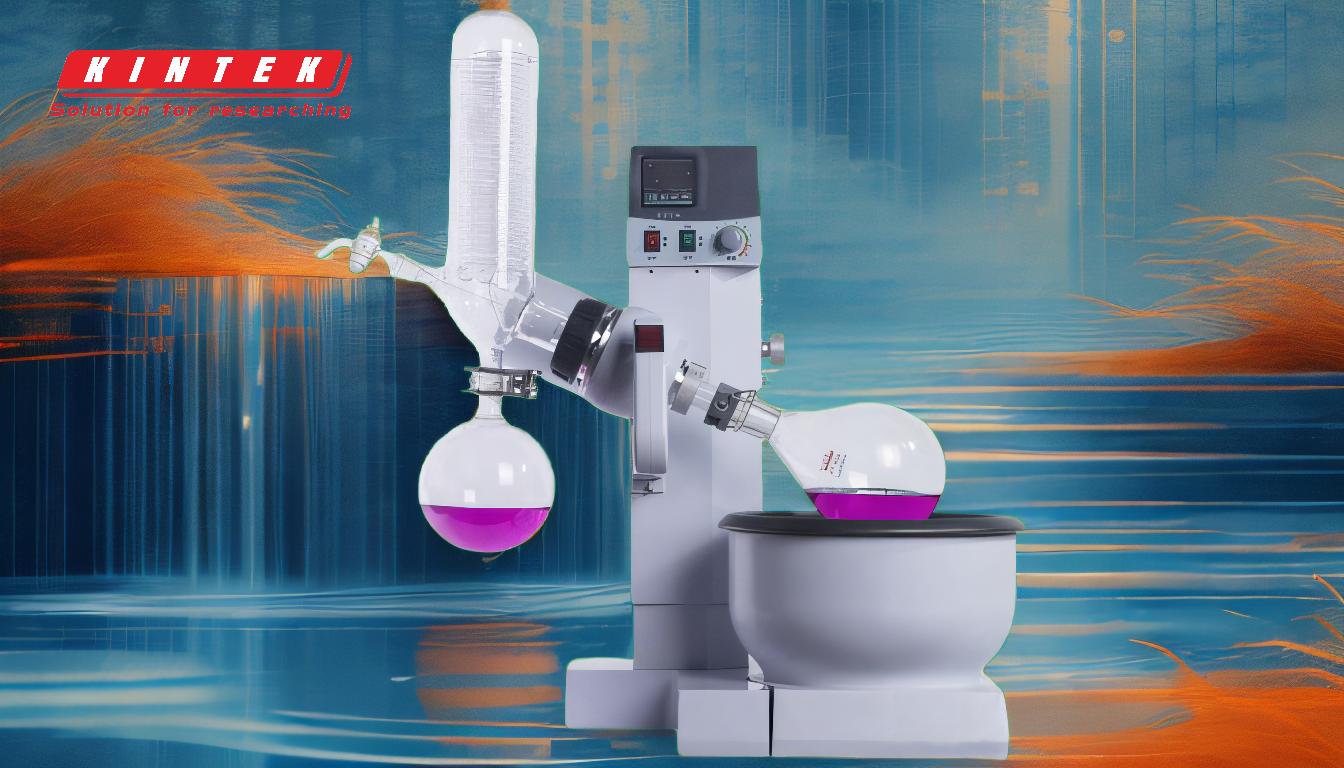A rotary evaporator, often referred to as a "rotovap," is a laboratory device used primarily for the efficient and gentle removal of solvents from samples through evaporation. It operates under reduced pressure (vacuum) to lower the boiling point of the solvent, allowing it to evaporate at lower temperatures. The device consists of a rotating flask, a heating bath, a condenser, and a collection flask. The rotation of the flask increases the surface area of the solvent, forming a thin film that enhances evaporation. The solvent vapor is then condensed back into liquid form by the condenser and collected in a separate flask. This process is widely used in chemical, pharmaceutical, and food industries for solvent recovery, concentration, and purification.
Key Points Explained:

-
Purpose and Function:
- A rotary evaporator is designed to remove solvents from samples efficiently and gently. It is particularly useful for heat-sensitive materials that may degrade at high temperatures.
- The device operates under vacuum conditions, which lowers the boiling point of the solvent, enabling evaporation at lower temperatures.
-
Key Components:
- Rotating Flask: The flask holds the sample and rotates at a constant speed. This rotation creates a thin film of the sample on the inner walls of the flask, significantly increasing the surface area for evaporation.
- Heating Bath: The flask is heated uniformly by a water or oil bath, which indirectly transfers heat to the sample. This ensures gentle and controlled heating.
- Condenser: The solvent vapor travels from the rotating flask to the condenser, where it is cooled and converted back into liquid form.
- Collection Flask: The condensed solvent is collected in a separate flask for recovery or further analysis.
- Vacuum System: The vacuum reduces the pressure inside the system, lowering the boiling point of the solvent and facilitating faster evaporation.
-
Working Principle:
- The sample is placed in the rotating flask, and the system is sealed to create a vacuum. The flask is then rotated at a constant speed, forming a thin film of the sample on its walls.
- The heating bath provides uniform heat to the flask, causing the solvent to evaporate at a lower temperature due to the reduced pressure.
- The solvent vapor moves from the flask to the condenser, where it is cooled and condensed back into liquid form.
- The condensed solvent is collected in the collection flask, while the remaining sample is concentrated in the rotating flask.
-
Advantages:
- Efficiency: The large surface area created by the rotating flask and the reduced pressure significantly enhance the evaporation rate.
- Gentle Processing: The lower boiling point under vacuum conditions allows for the gentle removal of solvents, making it suitable for heat-sensitive materials.
- Solvent Recovery: The condensed solvent can be easily collected and reused, reducing waste and cost.
-
Applications:
- Chemical Industry: Used for solvent recovery, concentration of solutions, and purification of compounds.
- Pharmaceutical Industry: Essential for the extraction and purification of active pharmaceutical ingredients (APIs) and other sensitive compounds.
- Food Industry: Utilized for the concentration of flavors, removal of solvents from extracts, and preparation of food samples for analysis.
-
Operational Considerations:
- Speed Control: The rotation speed of the flask can be adjusted to optimize the evaporation process. Too high a speed may cause splashing, while too low a speed may reduce efficiency.
- Temperature Control: The temperature of the heating bath must be carefully controlled to prevent overheating of the sample, especially for heat-sensitive materials.
- Vacuum Level: The vacuum level must be adjusted according to the solvent being evaporated. Different solvents have different boiling points under reduced pressure, and the vacuum must be set accordingly.
-
Maintenance and Safety:
- Regular maintenance of the rotary evaporator is essential to ensure its proper functioning. This includes cleaning the glassware, checking the vacuum system, and ensuring that the heating bath is functioning correctly.
- Safety precautions should be taken when working with volatile solvents and under vacuum conditions. Proper ventilation, the use of safety glasses, and adherence to laboratory safety protocols are crucial.
In summary, a rotary evaporator is a versatile and essential tool in many laboratories, offering an efficient and gentle method for solvent removal and sample concentration. Its ability to operate under reduced pressure and controlled temperature makes it ideal for handling sensitive materials and recovering solvents for reuse.
Summary Table:
| Aspect | Details |
|---|---|
| Purpose | Efficient and gentle solvent removal, ideal for heat-sensitive materials. |
| Key Components | Rotating flask, heating bath, condenser, collection flask, vacuum system. |
| Advantages | High efficiency, gentle processing, solvent recovery. |
| Applications | Chemical, pharmaceutical, and food industries for solvent recovery and purification. |
| Operational Tips | Adjust rotation speed, control temperature, and set vacuum level carefully. |
| Maintenance | Regular cleaning, vacuum system checks, and heating bath maintenance. |
Discover how a rotary evaporator can optimize your lab processes—contact us today for expert advice!











